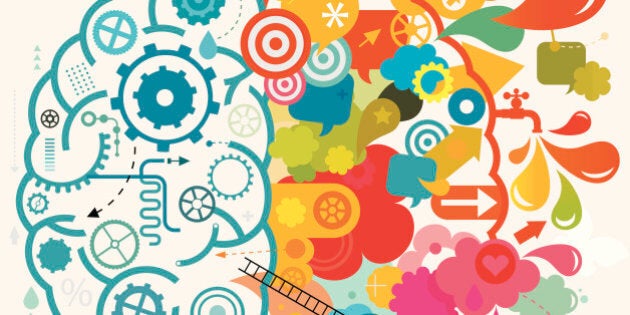
My third year of university included a course with nothing but Shakespeare, three mornings a week (and yes, I liked it). I toted a giant-cockroach-squishing-sized anthology across campus, one that was way too big to comfortably fit into a bag. As luck would have it, my class was in the engineering building, and given the amount of hassle artsies and engineers gave one another, I felt pretty conspicuous. I would hunch myself around the enormous volume and hoof it through the halls, anticipating strange looks, at the very least. The engineers in first year English, who were obliged to navigate everything from Chaucer to Thompson Highway, probably felt the same way. Even in an institution of higher learning, there was a strong sense that the arts zigged, the sciences zagged, and there wasn't really a need for them to intersect.
What was with the divide between arts and sciences? Had it always been the case? Historically, no. Google the word "polymath," and you'll find a whole lot of thinkers whose ability to think both creatively and technically not only made them interesting, but also more successful. Ancient Greek philosophers were also astronomers, biologists, poets, musicians and playwrights. Leonardo Da Vinci, Benjamin Franklin, and Hildegard of Bingen all stood in both camps. Ada Lovelace, who created the first computer program, called herself a "poetical scientist." Avicenna's volumes of writing included the creative as well as the scientific. In more modern times, actress Hedy Lamar invented communications technology that's still used in wifi and Bluetooth devices. Noted biologist Desmond Morris is also a film director, surrealist painter and children's author. Canada's own Chris Hadfield may be an astronaut, but he's also a poet, photographer and musician. The list goes on.
Somewhere along the line, we started thinking that arts and science don't need one another, that it's possible and sometimes even preferable to limit one's self to a particular way of thinking. At some point, science and technology became the realm of the practical, and arts became a luxury. I'm not alone in thinking that this great divide has done us a great disservice. It wasn't until I had to teach from both subject areas that I realized how much learners (and educators) benefited from a cross-curricular approach.
Thankfully, education seems to be pushing these two subject areas back together. STEM (Science, Technology, Engineering, and Math) has become an important part of the educational vernacular in the past 10 years, and for good reason. There are needs to be filled that depend on it. However, it's becoming increasingly common to hear about STEAM, or STEM with an arts component. Some even talk of STREAM, pulling in reading and writing and emphasizing the importance of literacy. It's not just about producing scientists who have a background in the arts, but also artists who know how to apply science and technology.
What do we stand to gain from reuniting science and arts in education?
-More and more, we're noticing and acknowledging that no two thinkers are alike. It may be easier for some learners to come at science through an artistic lens, or vice versa. The more we blend subject areas, the more learning tools become available.
-We're also starting to acknowledge that, for whatever reason, males and females approach learning differently. If, traditionally speaking, women are thought to be at home in the arts, and men are thought to be at home in STEM, then blending the two stands to bridge the gender gap.
-STEM isn't just about formulas and experiments. Scientists still need to be creative, and to communicate effectively. They need to think critically about the impact their work has on humanity. All of these "soft skills" are taught extensively in the arts.
-As citizens of the 21st century, artists need to know how to make use of the technology available to them. The arts are being changed by science and technology, the way work is done, the way it's shared, and the way it's understood.
Most exciting is the fact that we're getting away from the practice of pigeonholing our thinkers, and accepting that effective minds have many interests. Great ideas in one field feed and are fed by great ideas in other fields. Good thinking is just good thinking, especially when it happens without labels. Pop culture is peppered with references to this blending of viewpoints: Steampunk, the Maker movement, geeky baking shows on YouTube, and children's building toys that make use of storytelling. Richard Florida speaks of the rise of the "creative class," and the tendency for innovative cities to appreciate and applaud excellence in both arts and sciences. This isn't to say that we should expect everyone to be an expert in everything, but we can at least hope that encouraging more diverse patterns of thinking will open up new dialogues and new opportunities.
Perhaps it's time I took Shakespeare for a walk through the engineering building again.